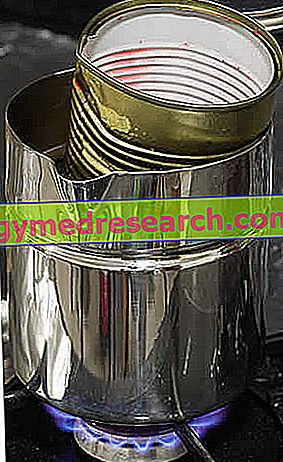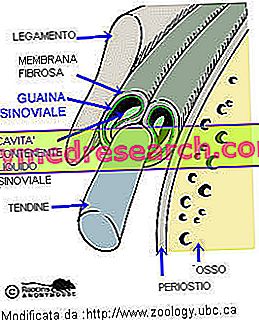Edited by Eugenio Ciuccetti, Obstetrician
One of the typical problems faced by many menopausal women is osteoporosis. This is especially true if some of the main contributing factors are present, such as, for example, a positive family history, smoking, drug use, alcohol abuse or certain diseases such as chronic kidney disease, hyperthyroidism and diabetes mellitus.

In reality, bone loss accompanies us for most of our lives. But there is no doubt that the appearance of menopause substantially increases this degenerative path.
This is because the close causal relationship between estrogen deficiency (typical of menopause) and accelerated bone loss has now been demonstrated.
Our bones, on the other hand, are metabolically active organs, that is, they are subjected to a continuous process of remodeling throughout their lives. Every year about 10% of our overall bone mass is renewed, through physiological mechanisms of neo-formation and resorption. Which, among other things, allows our skeleton to act - besides being a mechanical support for the movement, support and protection of organs and soft tissues - from essential calcium and phosphorus deposits for our whole body.
The protagonists of this process are mainly two types of cells: osteoclasts and osteoblasts. Both derive from the bone marrow, in fact they perform two fundamental functions: the first are deputed to the destruction and reabsorption of the bone; the latter instead have the constructive task of depositing an amorphous organic matrix, called osteoid, which is subsequently made hard by the precipitation of calcium and phosphates.
The role played by parathormone (or parathyroid hormone), vitamin D and calcitonin is also indispensable. The parathormone - freed from the parathyroids - determines a ready release of calcium from the skeletal deposits every time the serum calcium decreases. Vitamin D stimulates the absorption of calcium and phosphorus in the intestine. Finally, calcitonin inhibits the activity of osteoclasts and opposes the effects of parathormone.
Upstream of this context, estrogens play a central role: for example by promoting renal tubular calcium reabsorption; then favoring the conversion of vitamin D and the consequent intestinal absorption of calcium; and further increasing the synthesis of calcitonin which counteracts the effects of the parathyroid hormone.
Estrogens also act on various local factors, indirectly stimulating bone formation, on which they also perform a direct trophic action. Their lack, on the other hand, automatically translates into greater activity of osteoclasts and increased resorption.
In other words, in menopause, decreasing estrogen, we will have less intestinal and renal calcium reabsorption and greater activity of osteoclasts, with a consequent decrease in bone mass. Add to this that, while in men the starting stocks are generally higher and the decline occurs slowly, in women the whole occurs in a much more sudden and insidious manner.
This is why, from this point of view, estrogen replacement therapies - of which today all the pros and cons are widely debated - can contribute to containing osteoporosis in menopause, significantly reducing the risk of fractures. But even more important is the prevention that must first of all be based on a basic awareness: and that is that a reduced bone mass is the main risk factor.
How to influence this then, then its proportional resistance? On the one hand, there are genetic components on which we cannot intervene. There is no doubt, for example, that osteoporosis constitutes a more substantial threat for people of white race, with a very clear complexion, short stature and small build.
However, there are other essential factors on which it is possible to intervene early and for life. This applies, for example, to food that - intolerances permitting - must provide for a substantial intake of milk and derivatives, while it must be limited from the point of view of fats and fibers (which bind calcium and limit absorption). In short, it is essential that the woman takes, if necessary also through integrations, an adequate amount of calcium. This keeping in mind that this requirement, after menopause, goes from 1 gram (premenopausal) to 1.5 grams a day.
Determinants, then, are exposure to the sun (which favors the production of vitamin D) and physical activity. A sedentary lifestyle and reduced muscle mass are in fact other important risk factors for osteoporosis. Simply sleeping in bed, for example, involves a loss of bone mineral.
The exercise instead - if consistent with the age and the overall profile of the subject in question - helps to stimulate the deposition of matrix on the remodeling surfaces, therefore the formation of new bone tissue. In this sense, gentle exercise and Pilates represent an excellent training opportunity even for the most advanced age groups. The physical activity in menopause, among other things, plays a key role also in many other points of view: it helps to prevent cardiovascular diseases, helps to maintain mental well-being and a better aesthetic form, allows both to maintain a balanced weight body that a good muscle tone.
Without forgetting that today there are valid diagnostic methods that can help women with risk factors, or at least after 60 years of age - and the operators who assist them - to correctly frame the problem of osteoporosis and therefore to face it in the most effective way.
From the point of view of instrumental investigations, for example, Computerized Bone Mineralometry (MOC) now represents the reference method. This - through the use of X-rays and the evaluation of their absorption by the bone tissue - allows to measure the mineral heritage of the skeleton and the consequent risk of fractures. The MOC is not invasive and lacks radiation risks for the patient. The exam must be repeated periodically (about once a year) in order to promptly monitor the presence of any modifications.



